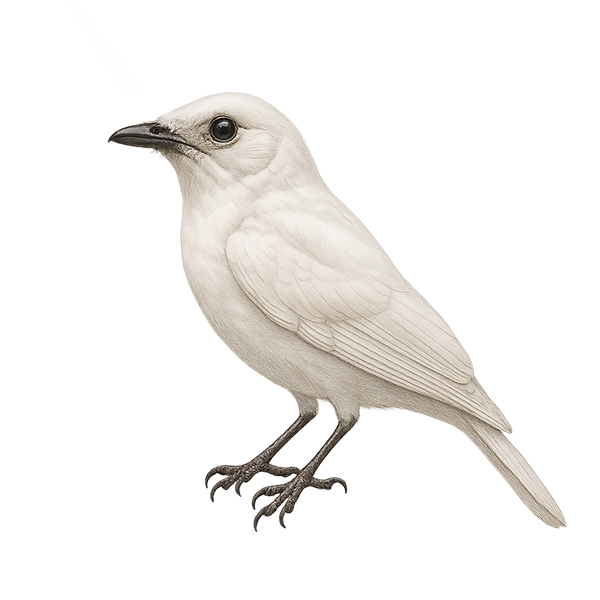Your wildlife photography guide.
Explore the white bellbird in detail, study its behavior, prepare your shots.
Where to observe and photograph the white bellbird in the wild
Learn where and when to spot the white bellbird in the wild, how to identify the species based on distinctive features, and what natural environments it inhabits. The WildlifePhotographer app offers tailored photography tips that reflect the white bellbird’s behavior, helping you capture better wildlife images. Explore the full species profile for key information including description, habitat, active periods, and approach techniques.
White Bellbird
Scientific name: Procnias albus

IUCN Status: Least Concern
Family: COTINGIDAE
Group: Birds
Sensitivity to human approach: Suspicious
Minimum approach distance: 10 m
Courtship display: September to December
Incubation: 26-28 jours
Hatchings: September to January
Habitat:
Tropical rainforests, montane forests, forest edges
Activity period :
Primarily active during the day, with peak activity in the morning and late afternoon.
Identification and description:
The White Bellbird, or Procnias albus, is a fascinating bird from the Cotingidae family, known for its piercing and distinctive call. It is primarily found in the tropical rainforests of South America, particularly in Brazil, Venezuela, and Guyana. The male is notable for its striking white plumage and fleshy wattle on its beak, used to attract females during mating season. The female, on the other hand, has a more subdued olive-green plumage, allowing her to blend into the foliage. This bird is mainly frugivorous, feeding on fruits and berries, but may also consume insects occasionally.
Recommended lens:
400 mm – adjust based on distance, desired framing (portrait or habitat), and approach conditions.
Photography tips:
To photograph the White Bellbird, it is advisable to use a 400mm lens or longer to capture detailed images without disturbing the bird. Look for areas where fruits are abundant, as this bird is often attracted to these food resources. Be patient and discreet, as the White Bellbird can be suspicious. The best times to observe it are early in the morning or late in the afternoon when activity is at its peak.
The WildlifePhotographer App is coming soon!
Be the first to explore the best nature spots, track rutting seasons, log your observations, and observe more wildlife.
Already 1 430 wildlife lovers subscribed worldwide

